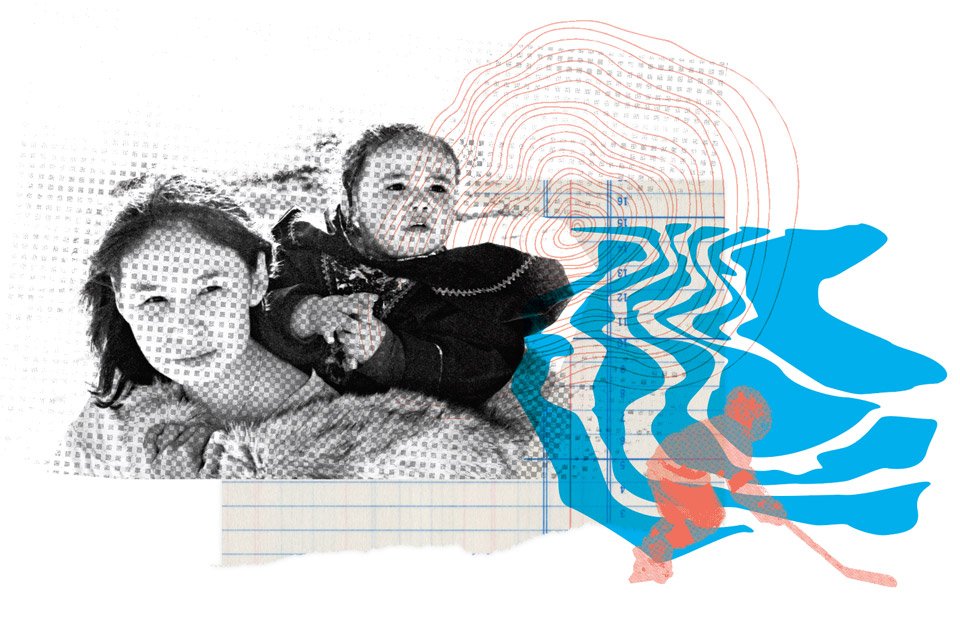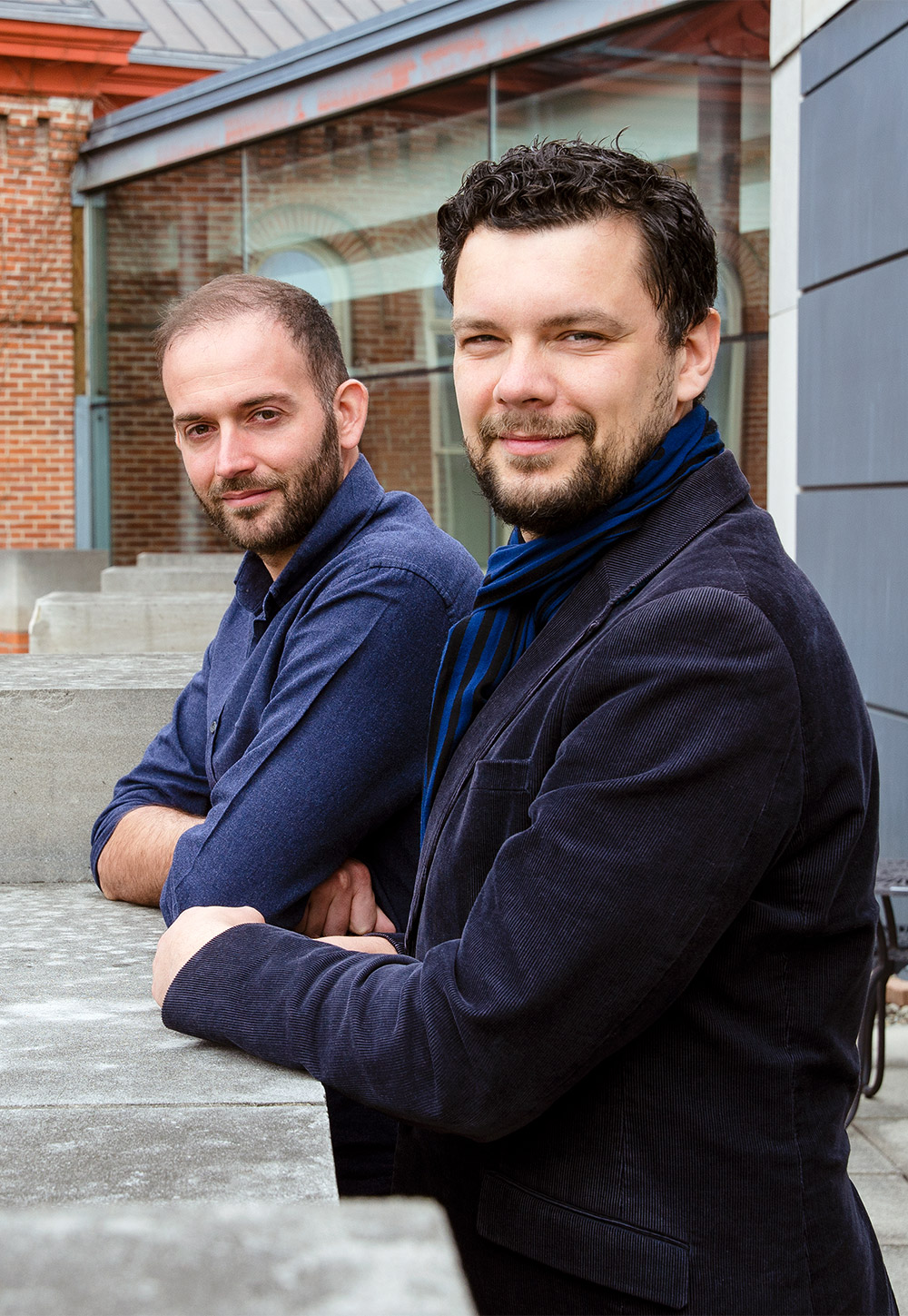Accounting for people

On a bone-chilling night in February a while back, an accounting researcher found himself trudging through an Inuit village in Canada’s Arctic. Wind chills sent the temperature down to minus 40. The researcher kept walking, past a row of government-built houses, and up a small hill, where, across from the local hunters’ and trappers’ office, stood the town’s hockey arena.
Stepping inside, he heard skates and sticks and pucks hit boards. This was practice night. A coach led a group of eight- to 12-year-olds through drills. The researcher looked around. In some ways this could have been any rink anywhere in Canada. Sponsors’ banners hung overhead. About a dozen parents watched from the stands; young children ran about.
Yet something was missing. All the parents were women; there were no men. The researcher sat down to watch the practice. Minutes later he got up and walked to where a mom was selling tickets for a fundraiser – two dollars per ticket. He bought 20, and they chatted about the local hockey scene. Finally, he asked, “Where are all the dads?”
“It depends,” the hockey mom responded. “Most are away, at the mine.” Her son skated by. She gave him a thumbs up. “We are the dads,” she said.
This scene was recently described by Smith accounting professors Bertrand Malsch and Pavlo Kalyta. It was Kalyta who had braved the Arctic cold that night to visit the rink. He and Malsch are doing a study on corporate social responsibility. They’re examining the impact that mining operations have on Indigenous communities in Canada's Far North. And they’re employing a little-practised but rather exciting method of accounting research: ethnographic fieldwork.
Ethnography? You probably heard that term back in high school. It’s the scientific study of people and cultures. In research, ethnography is often used by social scientists like anthropologists. But accountants? Well, not frequently, but yes. And for good reason.
Though we may not realize it, accounting is all around us. Companies run on accounting. Organizations regularly make decisions on accounting problems, auditing and accountability. Their choices can improve lives – of workers, communities, families, children. Or make them worse. Researchers want to know which.
That’s where ethnography comes in. By venturing into the field to experience accounting decisions first-hand, says Malsch, “you’re able to humanize research because you’re paying attention to human lives. You’re starting the research story from people’s own problems.” That idea is what led Malsch and Kalyta to the Arctic in the first place.
Organizations regularly make decisions on accounting problems. Their choices can improve lives – of workers, communities, families, children. Or make them worse. Researchers want to know which.
On the surface, accounting is about numbers – data, dollars and spreadsheets. That’s perhaps why traditional research methods follow the money. “It’s quantitative,” says Kalyta. Yet sometimes more information is required. So researchers will interview auditors, corporate accountants and chief financial officers for insights. But sometimes interviews aren’t enough either. Consider Malsch and Kalyta’s study. Could either man, as a stranger, walk into an isolated Arctic town and ask people on the street how they interact with the local mining company, and whether that relationship is good or bad? Of course not.
Malsch and Kalyta had to go deeper. That meant living with people in the affected community to understand their day-to-day existence. It also meant heading to the mines, hanging out with miners, eating with them in their cafeterias for days on end, even joining them for smoke breaks.
“The ethnographic approach is to go out in the field and see how things work with our own eyes,” Malsch explains. “You’re observing and engaging with people. You’re able to capture emotions, the atmosphere and details.” That is exactly what Malsch and Kalyta did to further their study on mining companies and northern communities.

Smith accounting researchers Bertrand Malsch and Pavlo Kalyta.
Time for tea?
Pavlo Kalyta joined the Smith faculty in 2016 from McGill University. Earlier in his career, in Ukraine, he was a journalist. So he was comfortable walking into unfamiliar situations. On his first trip north, Kalyta wanted to get a sense of the community dynamics and identify key groups and stakeholders. The largest town he stayed in had only around 1,000 people. But within that town were various formal and informal groups of importance. These included the town council, police, the youth council, elders and hunters.
At first, he figured on making two trips north. In the end, he made four, spending a total of four months over three winters in two different Inuit communities and at mining outfits.
One immediate problem was access. Arctic villages are tight-knit. Kalyta had to get to know people and get them to trust him in the short time he was there. He settled on a tried-and-true method: couch surfing. “If you’re staying at someone’s house, if you’ve been welcomed into their home, you’re gradually going to get to know a lot more people,” he explains.
It helped that Kalyta wasn’t averse to drinking tea. In Inuit communities in the Far North in the dead of winter, people get together over tea. “It’s a custom,” Kalyta says. “They go over to each other’s houses. You don’t have to call in advance.” Living with a local family, he was invited to tag along for tea. Soon he became a familiar face around town.
Kalyta also helped within the community. He pitched in at local bake sales and went hunting and fishing. He even gave an informal talk to students at a local school about career opportunities. (Kalyta and Malsch are not divulging the exact location of the towns or mines they visited; as such, these are not named in this article.)
Kalyta wanted to better understand the relationship between mining companies and Inuit communities. “That is the beauty of ethnographic methods versus formal research interviews. With formal interviews you contact someone and ask them formal questions with formal answers.” But through conversation and immersion in community life, Kalyta was able to get, as he puts it, “a sense of what exactly is going on, the issues that occupy people, and which of these issues are important and those that are not so important.”
Observation helped fill in details. At the hockey rink, for example, Kalyta eyed the sponsors’ banners and noticed that the mining company was a prominent supporter of local hockey. A gym off to one side had equipment donated by the mine. Then there was the absence of dads at hockey practice. They were all away working at the mines. Those observations, says Kalyta, helped him understand “how fundamental, how significant the role of the mining company is in the community…and how big the mining company is in people’s lives. It was not like a typical worker-employer relationship.”
Notes from the field
Bertrand Malsch joined the faculty at Smith in 2013 from HEC in Montreal. He specializes in studies that view accounting from sociological, psychological, organizational and other perspectives beyond economic and finance theory. Several times he’s incorporated ethnography into his research. While working on his PhD, he joined shareholder activist groups to better understand how they functioned.
For another paper, “Fear and Risk in the Audit Process”, he and fellow researchers observed auditors at work. They discovered that, contrary to the popular perception of auditors as robot-like professionals, auditors are, in fact, dogged by fear that their work will be incorrect or that they will miss something crucial during an audit.
Malsch believes that ethnography has a vital place in accounting research. However, he says, it’s still rarely used, especially in North America. Only one per cent of papers published in accounting publications employ ethnographic fieldwork.
To help promote ethnography in accounting, Malsch and Kalyta recently teamed up again to write a paper on the subject. Called “Ethnographic Accounting Research: Field Notes from the Frontier”, the paper is something of a road map for their fellow researchers – how to conduct ethnographic research, its pitfalls, challenges and benefits.
An obvious problem, they say, is that ethnography is time-consuming and can be costly. (You’ll recall that Kalyta spent several months over several years in the Arctic.) The work also comes with a risk that observation will yield little useful information. “You don’t know what you’re going to find ahead of time,” explains Malsch. Objectivity can be another issue. Even trained researchers can misjudge a situation. Followup interviews and data are necessary to back up observations, they say.
In their paper, Malsch and Kalyta also stressed the importance of cultural sensitivity. While visiting Arctic communities, Kalyta says he made an effort to respect the Inuit lifestyle. For example, in summer, Inuit communities are busy places as people go off to hunt and take on a host of other activities. That’s why Kalyta trekked north during the frigid winter (when life is slower).
Such efforts can pay off for accounting researchers who want to understand the impact of accounting practices on everyday people. Malsch says that his research with Kalyta revealed a complex relationship between the mining company and the local Inuit. “It wasn’t as simple as the community against the mining company,” he says.
In their paper on accounting research, Malsch and Kalyta perhaps best summed up the potential they found in ethnography. “If accounting researchers genuinely care about the impacts of accounting on society,” they wrote, “they should be inspired to report the stories and narratives of joy, pain, needs, and hopes of our fellow human beings in the broader sense of the accounting universe – of those who create and use various numbers, regulations, reports, standards, transactions or accounts” and, they stressed, “especially of those who are affected by them.”
